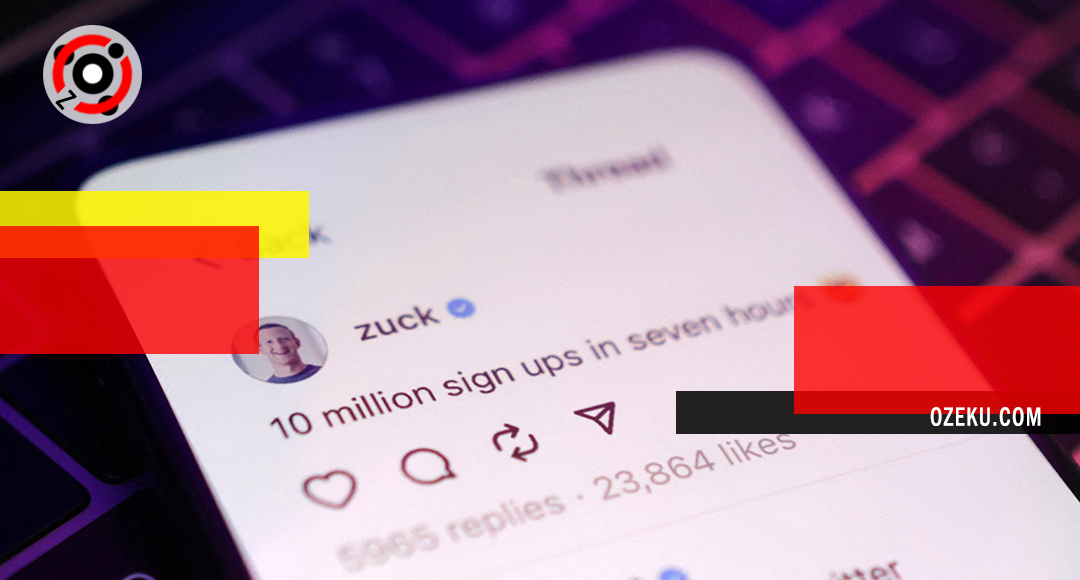Contents
- 1 11 Statistics on Entrepreneurial Ideas
- 2 How to come up with startup ideas
- 3 Pay attention to your own problems and solve them.
- 4 Be curious about a specific problem and refine it
- 5 Dig into what is responsive and pivot.
- 6 Notice the paradigm shift and think backwards
- 7 While brainstorming with your friends, pay attention to the 4 strategies mentioned earlier
Business Tips | Startup entrepreneurs who have to make countless irreversible decisions every day, create something that has never been done before with people they have never worked with in their life. If you watch them, the words “Startup, really, not just anyone!” come out. It is similar to the look of a stranger walking on a path that can only be seen faintly in the darkness.
Today, Lenny’s Newsletter, a business newsletter loved by many people not only in Silicon Valley but also in Korea. Lenny Rachitsky said he made the content into a series while listening to the growth stories of numerous usaha188 companies such as Uber, Airbnb, and Reddit. Among the six contents, we analyze and introduce the characteristics of successful startups in the stage of ‘generating entrepreneurial ideas’.
Because there are so many interesting statistics and examples, it will be a really good reference for people like me who think, ‘I’m going to start a business someday!’ Since the full text of the article is so long, we will edit and share it with a focus on key cases.
11 Statistics on Entrepreneurial Ideas
- 50% of the entrepreneurs in the consumer goods business I researched were under the age of 30, and 80% were under the age of 35.
- Most start-up ideas were expected to come from solving their own problems, but in reality, less than 33% of entrepreneurs tried to solve their own problems through entrepreneurship.
- Also, only 33% of entrepreneurs did not actively try to come up with entrepreneurial ideas. In other words, most entrepreneurial ideas arise spontaneously.
- Only 18% of successful startup ideas are born through pivoting.
- Entrepreneurs who have the technology to develop products were less than 33%.
- More than 50% of the most successful consumer product business ideas start out as very trivial ideas. (e.g. Twitter, Snap, Pinterest, Coinbase, Tinder, Calm, Airbnb).
- Over 75% of consumer product startups are founded by two or more founders.
- 68% had a co-founder who was a developer.
- 42% had previous experience starting a company.
- 11% of founding teams had an MBA among their co-founders.
- Out of over 50 startups, only 1 DoorDash was actively talking to potential customers/users to generate ideas.
How to come up with startup ideas
In a study of over 50 of the most successful consumer companies, five common strategies for coming up with great startup ideas all started with paying attention to a topic. Let’s break this down into statistics.
1. Entrepreneurs start their own businesses by solving everyday problems (~30%)
2. After being curious about a specific topic, start a business based on that topic (~20%)
3. Pivoting by digging into what was responsive among the things I tried (~18%)
4. Entrepreneurs interested in paradigm shift (~15%)
5. Start a business by brainstorming with friends and considering the above 4 (~15%)
Pay attention to your own problems and solve them.
Paul Graham says, “Pay special attention to what is bothering you.” It comes from game situs resmi usaha188 the fact that the largest percentage (30%) of successful consumer products companies are solving real-world problems and realizing that those solutions are of value to others as well. For example:
1. Dropbox: Drew Houston, who kept losing his USB, created a cloud-based file sync feature.
2. Etsy: Rob Kalin couldn’t find a good way to sell his homemade furniture, so he started a marketplace.
3. Apple: Steve Wozniak couldn’t find a computer he liked, so he built one.
4. Substack: Chris Best and Hamish McKenzie set the direction for content and journalism, and decided to find a solution for themselves.
5. Uber: Garrett Camp, frustrated with transportation in San Francisco, began experimenting with a better way.
6. GOAT: After Daishin Sugano was scammed in trading fake Air Jordans, he thought what a better solution.
7. Calm: Michael Acton Smith founded Calm after discovering that meditation can help him overcome inner pain.
From now on, entrepreneurs share how they overcame their own problems and found entrepreneurial opportunities along the way.
1. Etsy
“I started a woodworking company and made premium computer cases. I was looking for a way to sell this product. I looked at offline sales channels that include consignment sales and wholesale, but they didn’t suit my taste. I also looked at online channels, but it didn’t work out. I didn’t.
Then a magical moment came when he started working with Get Crafty founder Jean Railla. I was asked to reorganize Get Crafty’s website, and that’s how I started designing the website. While working on Get Crafty like this, the thought of wanting to sell the products I made naturally permeated into my work.
So, I suggested adding a Marketplace menu to Get Crafty. After hearing my idea, Jean suggested creating a separate marketplace instead of adding a marketplace menu inside Get Crafty, and I agreed. The idea that started like this gradually evolved and was born as Etsy.” – Rob Kalin (Etsy co-founder)
Read More Idea at siapos.com
2. Substack
“It all started with a conversation between Chris and I, where he talked about the problems of the ‘attention-based economy’ itself, how bad online content is created, and how people are doing online. I was drafting a blog about how evil it would ultimately be for society, and asked me for feedback on that content. said it was insufficient.
And, I urged Chris to add a better solution to the blog. However, Chris started to convince me that instead, it would be better to have readers pay writers directly, creating an incentive structure that is good for everyone.
both of us at the time Stratechery, and I remembered Ben Thompson, who runs Stratechery, saying that the pay-to-content model works so well, and he doesn’t know why more people aren’t trying it. We wondered what would happen if we made it much easier for Ben, as well as writers in general, to build the infrastructure in the process of creating a paid content model. That’s when I started brainstorming Substack’s business model.”
– Hamish McKenzie (Co-founder of Substack)
3. Calm
“I couldn’t bear to go to the office every day. I would wake up every morning with a headache and feel sick, as if I had been hit by a truck, so I would take painkillers. So I started my day with painkillers every day. It was a very difficult time for me. This time Although this eventually led to the founding of Calm, I didn’t know what meditation was or what mindfulness was at the time, but my best friend Alex Chu bought me a CD-ROM from my school days and was meditating on it. I used to say, “You meditate,” but I said, “Stop it. Meditation doesn’t work for me. Please tell me something practically useful.”
And then, I went on vacation alone. I went to a resort in the Austrian Alps, played tennis every morning, scribbled in my notebook, read a book, and meditated, and something really amazing happened. The fog in front of my eyes began to clear, and I was driven to the edge of a precipice and couldn’t see a way out of my work-related problems, but just taking a step back and looking at it helped a lot. And after reading countless books and research papers, I came to know that mindfulness is a scientific method for reshaping the human brain. What if we could make mindfulness easy to understand and accessible to everyone? This got me thinking it could be one of the biggest business opportunities in the world.
I came back and talked to Alex about this, and Alex said, ‘Okay, you finally got it. Let’s do it.’ […] Alex found someone with a domain called calm.com […] and I said, ‘Oh my gosh, that’s a really cool domain, I think you can build a business with it to help make the world calmer. Yes,’ he said. Then he asked, ‘How much is your domain?’ Then he said, ‘Around a million pounds’ and I said, ‘I thought so’.
Then about a year later, while I was playing video games, the guy who owned calm.com said he wanted to sell the domain and wanted to make a deal. I could have bought it for a much lower price. We acquired calm.com, and it became the seed of the business.”
– Michael Acton Smith (Calm Co-Founder/CEO)
Be curious about a specific problem and refine it
20% of successful consumer goods businesses are the result of entrepreneurs simply following their curiosity and intuition, discovering ideas and spending time refining them. Most of the entrepreneurs who started a business like this came up with an idea and immediately built a prototype to see the possibilities. Then, from now on, listen to the stories of the founders who have grown into huge businesses by following their curiosity.
1. Coinbase: Intrigued by cryptocurrency-based apps, Brian Armstrong decided to create a Bitcoin wallet.
2. Opensea: Enthusiastic about the possibilities of the ERC-721 standard, Devin Finzer released a beta version of OpenSea within a few months.
3. Musical.ly (TikTok): Discovering that teens are combining video with music, Alex Zhu quickly prototyped TikTok.
4. Twitter: Intrigued by developing a simple way to send status updates to friends, Jack Dorsey prototyped Twitter in two weeks.
5. Tinder: Tinder’s early team said they couldn’t stop working after prototyping at a hackathon.
6. Duolingo: Louis Von Ahn began exploring language learning academically and wondered if he could turn it into a business.
1. Coinbase
“I came across the Bitcoin white paper by chance on Hacker News, I was just reading it on the Internet. I couldn’t understand everything from the first time I read it, but it was very interesting to me, who majored in computer science and economics . , I remember thinking, ‘This might be the most important thing I’ve read in five years!’ […]
At the time, Airbnb was trying to do business in 190 countries around the world, but the business was delayed because it was not possible to know the flow of money in each country. Looking at this phenomenon, I thought that the financial system is blocking innovation around the world, and this prevents people from freely participating in the global economy, which is blocking the development of mankind.
Imagine being able to spread America’s level of innovation and security just because 190 countries have the Internet, cell phones, and now cryptocurrencies. And, what if I could help with this? It was really exciting.”
– Brian Armstrong (Coinbase CEO/Founder)
2. Opensea
“Crypto Kitty As I began to be interested in , I came up with the idea of starting a business for OpenSea. There were quite a few digital goods marketplaces back then, but they all tended to form individual ecosystems, such as a specific game or domain, or a marketplace where you could buy tickets. At the time, there was little standardization of digital ownership, so scaling a marketplace for digital assets was difficult. However, I thought that it would be possible to build a comprehensive marketplace once ERC-721 is introduced.
Afterwards, the Opensea team engaged with various communities to validate the idea of a new ERC-721 project […] released the product and quickly released an early version to test the product with early adopters.”
– Devin Finzer (CEO/Co-Founder, Opensea)
Dig into what is responsive and pivot.
It’s a path that just over 15% of the successful consumer products startups I looked at followed. That is, start with something, pay close attention to which elements (unexpectedly) work best, and then focus on that one element.
1. Instagram: Kenvin Systrom found that people often use Burbn to filter and share photos they download from other apps, rather than use it to check in at a hotel.
2. YouTube: The founders of YouTube created a video-based dating site and found it more useful as a general video platform.
3. Lyft: Logan Green and John Zimmer found that long-distance ride-sharing service Zimride was struggling to do business, but there was high demand for short trips.
4. Glossier: Emily Weiss discovered a new need for custom beauty products at her former beauty community, Into the Gloss.
5. PayPal: Within a year, PayPal’s founding team pivoted from cell phone encryption to cell phone cash payments, then PalmPilots to cash payments via email, learning what was possible and useful, and using the service. switched.
6. Discord: Discord’s founder, Jason Citron, found that while the game business he created wasn’t doing well, users loved the voice and text chat features.
Even Elon Musk said this. “If you have two paths and it’s not clear which one is better, just pick one and do it rather than spend a lot of time trying to figure out which way is slightly better. Rather than endlessly agonizing over your choice, just pick one path and do it.” It’s often better to do it.”
The great thing about this strategy is that you can start with whatever you find most interesting because even if your ideas fail, they can lead to bigger ones. Here are the stories of companies that have found a way to grow into great businesses through pivoting, or by digging into ideas that are already responsive.
1. YouTube
“When YouTube was first launched in May 2005, YouTube was a dating service rather than a general video platform. So, in the very early days of YouTube, it was necessary to see if the dating platform needed video features in addition to photos and messages.
So, we launched a strategy to attract users by highlighting the advantages of videos. We quickly discovered that there was no need for video on a dating service, so we opened our service to all content creators.”
– Steve Chen (YouTube co-founder)
2. Discord
“Discord founder Jason Citron started his first business as a video game publisher and released a game on the first day of the iPhone App Store launch in 2008. However, the business waned and he eventually turned to OpenFeint, a social network for gamers. , sold to Japanese gaming giant Gree, and founded another company, Hammer & Chisel, to develop Fates Forever, an online multiplayer game with a League of Legends feel, featuring voice and text chat , We wanted players to be able to talk to each other while playing the game.
Then something very Silicon Valley happened. I realized that the biggest advantage of the Fates Forever game is the chat function. It was around 2014, and most of them were dissatisfied with using Teamspeak or Skype. Jason Citron and the Hammer & Chisel team thought they could improve it.
However, it was a pretty painful transition. Hammer & Chisel got rid of its game development team, laid off a third of its staff, transitioned many to new roles, and had to spend six months overhauling the company and its culture. Besides, you can’t be sure that a new idea will work. “When we decided to go all-in on Discord, we had about 10 users. There was only one group playing League of Legends and one World of Warcraft guild. I showed them to my friends and they all said ‘cool’, but never used them I didn’t,” Citron says.
After conducting user interviews and looking at the data, the team found that Discord is better than Skype, but still not as good. Calls would drop or drop in quality. After all, the Discord team completely changed voice technology three times in the first few months of the app’s launch. We also rolled out the ability to moderate, ban, assign roles and permissions to users on the server. Since then, those who have tested Discord have immediately noticed that Discord has better features than other services. And I started telling my friends about this. ”
– David Pierce (Editor-in-chief, Protocol)
Notice the paradigm shift and think backwards
One way to come up with ideas is to notice changes in the world and work backwards. Mike Maples Jr. said, “Start in the future and work backwards”, and Paul Graham said, “Live in the future and make what you lack.” Take a look at examples of founders who are actually doing just that.
1. Spotify: Daniel Ek realizes that the future of music is ‘pay-to-play’.
2. Amazon: When Jeff Bezos discovered that web usage was growing at 2,300% per year, he came up with the product he would benefit most from selling online: books.
3. 23andme: Anne Wojcicki realized that genetic information was cheaply available.
4. Instacart: Max Mullen and Apoorva Mehta note the rise of on-demand ridesharing and delivery services.
1. Amazon
“ When I was working at a quant hedge fund in New York, I came across the startling statistic that web usage was growing at a rate of 2,300% per year. So I decided to find a business plan to match this growth, and my first product was a book.
I made a list of 20 or so products I could sell, and books were a good first choice because the number of products in the books category far outnumbered those in other categories, which is very unusual.”
– Jeff Bezos (Amazon Founder/CEO)
2. Instacart
“Through various life experiences during the 10 years leading up to the founding of the company, I gained insights that Instacart would be a huge need for consumers. For example, the early experience of using Web 1.0 delivery services, or the food market in college. Like writing a business plan for the Place service, and witnessing the early days of a ridesharing service in 2011 after moving to San Francisco.
After having that insight in April 2012, I went all out to start this company, started talking about the idea to my smartest friends and getting their feedback . Fortunately, one of them contacted me in June 2012, the founder of Instacart.Apoorvawas Brandon, who also had similar insights while working at Amazon. Then, in July of 2012, Apoorva and I brought in Brandon as our third co-founder, and it was history.”
– Max Mullen (Co-founder of Instacart)
While brainstorming with your friends, pay attention to the 4 strategies mentioned earlier
A final strategy is to sit down with friends and come up with ideas. Eight of the 50 companies I looked at came up with ideas through vigorous brainstorming.
1. Netflix
“A popular story about Netflix is that after seeing Apollo 13 in the blockbuster and paying a $40 late fee, Reed had the idea. He said, ‘What if there were no late fees?’ “And that’s when the idea of Netflix was born. The story is beautiful. It’s useful. It’s emotionally true, as marketing says. But, as you can see in this book, that’s not all. Yes, Apollo 13 ‘s Although there was a problem with late fees, the idea of Netflix had nothing to do with late fees, rather, they charged late fees in the first place.The important thing is that the idea of Netflix did not come to me as a perfect and useful idea at one point.
It takes thousands of bad ideas before a good one is born. And sometimes it can be difficult to tell the difference. Custom sporting goods, custom surfboards, custom formulated dog food, these are all ideas I suggested to Reed.
I never knew what would succeed and what would fail. In 1997, all I knew was ‘I want to start my own company’ and ‘I want to sell things on the Internet’. That was all.”
– Marc Randolph (CEO and Co-Founder, Netflix)
2. Reddit
“On the train ride back to Virginia, my cell phone rang. It was Paul Graham. Paul said he hoped we’d come back to Y Combinator, but we’d have to change the idea. We got off at the next stop. , I flew back to the Y Combinator office, and I met Paul Graham, who told me to forget about mobile and think about browser services […]
At that time, there was a service called del.icio.us that allows you to view the saved website as it is even when using multiple computers if you bookmark a website. One of the interesting features is del. It was icio.us/popular. And, I thought of a service that collects ‘most shared links’, a feature that del.icio.us does not have.
When I came up with the idea, I hadn’t yet grasped the functionality of this idea, but it was clear that the dying news aggregation model was not suitable for the Internet age. And, finally, Paul Graham said, ‘That’s it! Let’s put that feature on the front page of the website.”
– Alexis Ohanian (Reddit CEO/Co-Founder)















